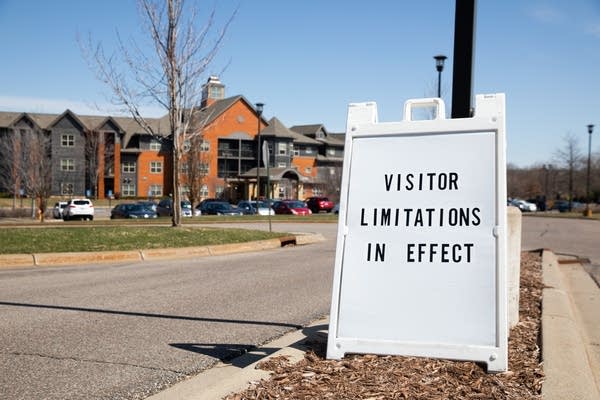State opens long-term care to visits from outside 'essential caregivers' after COVID-19 restrictions
Nursing homes, assisted living and other facilities have been closed to visitors since mid-March

Go Deeper.
Create an account or log in to save stories.
Like this?
Thanks for liking this story! We have added it to a list of your favorite stories.
Updated 6 p.m.
For the first time since mid-March, outsiders will be allowed into Minnesota’s long-term care homes to visit residents.
The Minnesota Department of Health put out new guidance Friday that allows residents to designate an “essential caregiver” to visit them inside their residence and to have physical contact with them.
The guidance indicates those caregivers would likely be a family member, friend, volunteer or “other, close outside caregivers” who had provided regular support to the resident before — or during — the pandemic.
The designated caregivers — state officials said residents could have more than one — would be screened for COVID-19 symptoms, would need to follow social distancing guidelines in the home with staff and other residents and would be required to wear personal protective equipment, such as face masks, when inside the facility.
Turn Up Your Support
MPR News helps you turn down the noise and build shared understanding. Turn up your support for this public resource and keep trusted journalism accessible to all.
“The Minnesota Department of Health recognizes the importance of social distancing and physical separation to help keep residents safe,” the new guidance says.
“MDH also acknowledges the unintended consequences of prolonged physical separation and isolation on a resident’s overall health and well-being. Although technology can help decrease loneliness for some residents, technology is not a sustainable replacement for in-person contact.”
The state’s long-term care facilities — which include nursing homes and assisted living, among others — have been hit hard by COVID-19. About 78 percent of COVID-19 related deaths in Minnesota have been in long-term care.
But over the last several weeks, the number of deaths statewide and in long-term care have decreased. The state has implemented more residence-wide testing at facilities where COVID-19 has been an issue and has implemented other changes to help limit the spread of the virus.
At the same time, there has been a push by some to allow more visitation of residents, for whom isolation can have significant health impacts.
Gayle Kvenvold, the CEO of Leading Age Minnesota, an organization that represents senior care facilities in the state, said this new guidance helps address that.
"We're not yet in a position where we can throw open our doors to regular visits and that's because obviously COVID-19 is still very much a threat for our settings,” she said. “But it is an opportunity to provide emotional and psychological support to an elder, to a resident."
Long-term care facilities are not required to implement the new guidance, but if they do, they are asked to develop a plan and guidance for designating essential caregivers and to put in place policies and procedures for how it will work.
Facilities have until July 25 to draft policies and prepare their programs, but they can also implement the program before then if they have policies and arrangements in place.
“Minnesota families have made great sacrifices to control the spread of COVID-19 in our long-term care facilities,” Gov. Tim Walz said in a statement. “I know this has been hard. But with this guidance, families will be able to reunite with their loved ones while continuing to protect the health of our elderly Minnesotans.”
When does the program start and how does it work?
The new guidance takes effect immediately, although a facility must have plans and procedures in place by July 25 on how the policy will work. Facilities do not have to implement this program.
How will it work?
A resident, together with the facility where they live, can choose one family member or trusted person to be an “essential caregiver.” That chosen person can visit the resident on-site but must follow strict guidelines.
They must be screened like health care workers each time they come, stay socially distanced from staff and other residents and wear a face mask and eye protection. COVID-19 testing in advance is encouraged but not required, a Health Department spokesperson said.
Visits can last for up to three hours a day. The caregiver’s privileges can be revoked if the rules aren’t followed. Visits are not allowed if a resident is under a 14-day quarantine.
What’s the goal?
State health officials say the change is intended to help people battle isolation, which can have damaging health effects on people, while also maintaining strong infection control protocols.
The Health Department recently opened the door to outdoor visits between residents and guests, under strict social distancing and masking guidelines.
Find the full guidance here.


